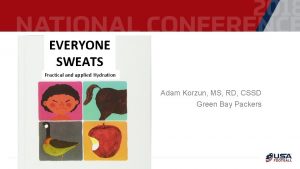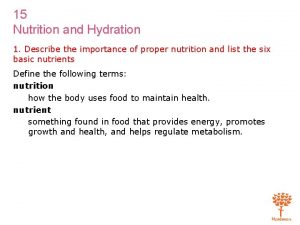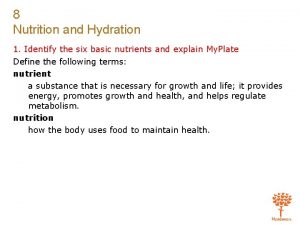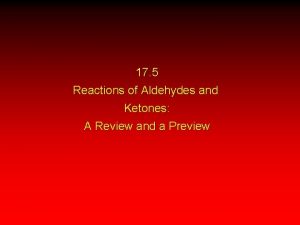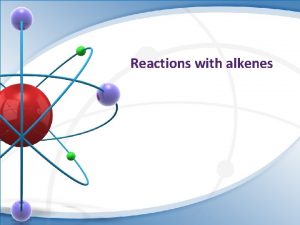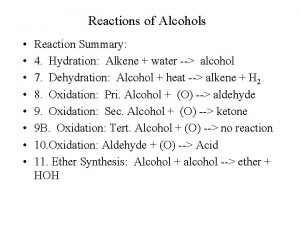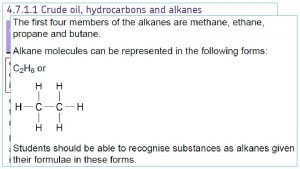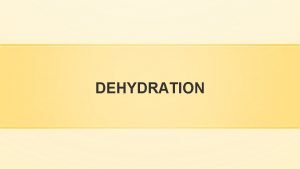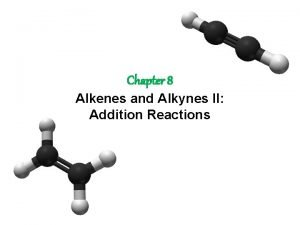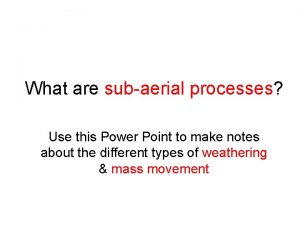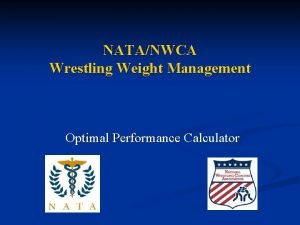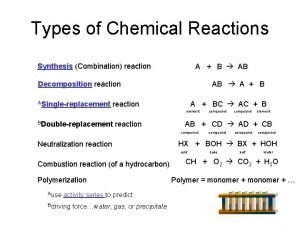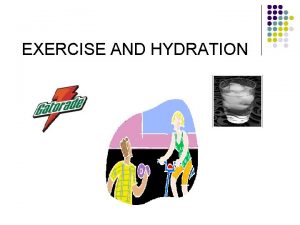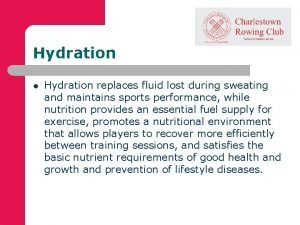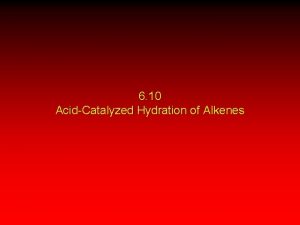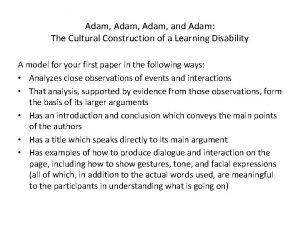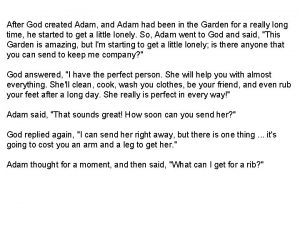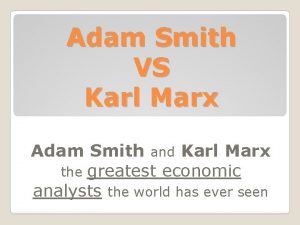EVERYONE SWEATS Practical and applied Hydration Adam Korzun




![1960: “Four small bottles for a long stage [of the Tour], it is frowned 1960: “Four small bottles for a long stage [of the Tour], it is frowned](https://slidetodoc.com/presentation_image/1ff1aae718b426b81a6382b8d441e2bd/image-5.jpg)






















- Slides: 27

EVERYONE SWEATS Practical and applied Hydration Adam Korzun, MS, RD, CSSD Green Bay Packers

WHAT IS REAL? …and why should I care about this

WHY DOES ANY OF THIS MATTER? The Sales Pitch • Physical performance • Recovery • Improved on field time • Mental Focus The Prevention • Heat stress/illness • Heat stroke • “Cramps” • Headaches

~110 YEARS AGO 1909: “Don’t get in the habit of drinking and eating in a marathon race; some prominent runners do, but it is not beneficial” – James E. Sullivan
![1960 Four small bottles for a long stage of the Tour it is frowned 1960: “Four small bottles for a long stage [of the Tour], it is frowned](https://slidetodoc.com/presentation_image/1ff1aae718b426b81a6382b8d441e2bd/image-5.jpg)
1960: “Four small bottles for a long stage [of the Tour], it is frowned upon to drink more…Avoid drinking when racing, especially in hot weather. Drink as little as possible, and with the liquid not too cold. It is only a question of will power. When you drink too much you will perspire, and you will lose your strength. ” – Tom Simpson ~60 YEARS AGO

1996: “Athletes should be encouraged to replace their sweat losses or consume 150300 ml (6 -10 oz) every 15 minutes (600 -1200 ml per hour)”. – 1996 ACSM ~20 YEARS AGO

~10 YEARS AGO 2007: The goal of drinking during exercise is to prevent excessive (>2% body weight loss from water deficit) dehydration and excessive changes in electrolyte balance to avert compromised performance. Because there is considerable variability in sweating rates and sweat electrolyte content between individuals, customized fluid replacement programs are recommended. Individual sweat rates can be estimated by measuring body weight before and after exercise. During exercise, consuming beverages containing electrolytes and carbohydrates can provide benefits over water alone under certain circumstances. After exercise, the goal is to replace any fluid electrolyte deficit. The speed with which rehydration is needed and the magnitude of fluid electrolyte deficits will determine if an aggressive replacement program is merited.

“SPORTS DRINK” • To be consumed during sport…not just because you play one • fluid • “electrolytes” • carbohydrates

MOST BASIC PHYSIOLOGY • During exercise, metabolic heat production increases in active muscles… • Up to 1 C every 5 -8 minutes… • Must dissipate this excess heat to continue • We have an amazing mechanism for that…called sweat! • Thus sweating is essential BUT sweating requires fluid! • And thus…our discussion continues!

APPLIED HYDRATION Simplify it to 3 questions: Are you hydrated to start? How much do you lose? What do you lose?

ARE YOU HYDRATED TO START?

• Anyone up for a little experiment?

• Urine Specific Gravity

RESULTS

HOW MUCH DO YOU LOSE? • Greatest Variation • Amounts change based on variables • Physical Factors • Environmental Factors • Genetic Factors

SIMPLE STRATEGY • For every pound lost = • 16 -20 oz water lost

WHICH MEANS • Build a strategy • Identify your high risk athletes

WHAT DO YOU LOSE? • Understanding the loss can help manage the replacement • Sweat test • Visual Cues • Taste

HUMAN SWEAT Electrolyte Typical daily intake (mg) Typical absorption efficiency Typical sweat losses per litre Loss in litres of sweat to be deficient Deficiency possible by sweating? Sodium 4000 >90% 230 -1700 4 Yes Potassium 2700 >90% 150 16 No Calcium 500 30% 28 5 Possible Magnesium 300 10 -70% 8. 3 -14. 2 15 No Table shows typical human sweat composition

A LITTLE MORE ON “CRAMPS” • What exactly is a cramp? • What causes a cramp? • How do I “fix” it • Control the variables • How not to overreact.

EXERCISE ASSOCIATED HYPONATREMIA • Inappropriate Overconsumption of Water • Excessive sodium losses • Excessive intake • “over-reaction to cramping”

WHAT ARE MY OPTIONS TO DRINK? Gatorade • Commercially available options Higher sodium; lower sugar Electrolytes; no sugar Custom and Individualized

HOMEBREW HYDRATION OPTIONS • 1 packet Kool. Aid • 1 cup sugar • 1 teaspoon Salt • 4 qt Water (double the packet) • Per 8 oz serving (Gatorade) • 12 g sugar • 143 mg sodium (16 g) (104 mg)

AS HYDRATION EVOLVES What do you sweat? With what/how do you need to hydrate? How much do you sweat?

IN CASE YOU MISSED IT – Q & A • Are you hydrated? • Make sure you are hydrated. • How much do you lose? • How much should you drink. • What do you lose? • What should you drink.

QUESTIONS?

HYDRATION
 Adam korzun
Adam korzun Hello good afternoon
Hello good afternoon Pros and cons of artificial nutrition and hydration
Pros and cons of artificial nutrition and hydration Nutrition and hydration chapter 15
Nutrition and hydration chapter 15 Chapter 8 nutrition and hydration
Chapter 8 nutrition and hydration Cyanohydrin formation
Cyanohydrin formation Hydration vs hydrogenation
Hydration vs hydrogenation Alkene reactions summary
Alkene reactions summary Is alcohol
Is alcohol Hydration level chart
Hydration level chart Is acid catalyzed hydration syn or anti
Is acid catalyzed hydration syn or anti Addition reaction of alkenes
Addition reaction of alkenes Addition of halogens to alkenes
Addition of halogens to alkenes Mercury catalyzed hydration of alkynes
Mercury catalyzed hydration of alkynes Mercury catalyzed hydration of alkynes
Mercury catalyzed hydration of alkynes Is acid catalyzed hydration syn or anti
Is acid catalyzed hydration syn or anti What is a subaerial process
What is a subaerial process Oxidation in geography
Oxidation in geography Optimal performance calculator
Optimal performance calculator Hydration shells
Hydration shells Hydration shells
Hydration shells Types of combination reaction
Types of combination reaction What is hydration enthalpy
What is hydration enthalpy Heat of hydration
Heat of hydration Adam white facebook
Adam white facebook Hi good morning everybody
Hi good morning everybody Cybersecurity and cyberwar what everyone needs to know
Cybersecurity and cyberwar what everyone needs to know We proclaim him admonishing and teaching everyone
We proclaim him admonishing and teaching everyone
